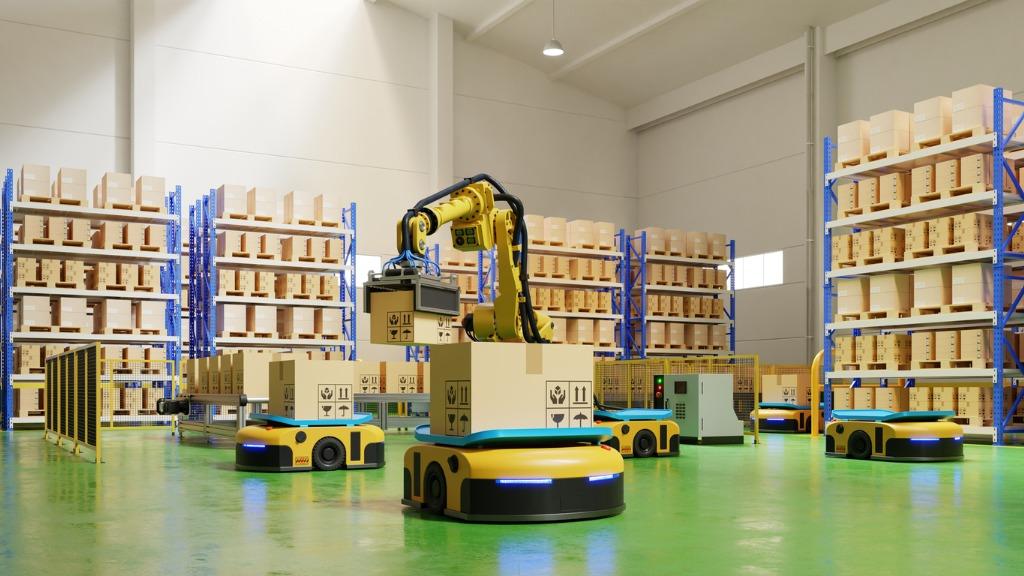Robotics and AI: The Future Pillars of Global Warehousing

The global warehouse robotics market is witnessing a technological revolution, transforming the traditional logistics ecosystem into an era of automation, intelligence, and efficiency. According to recent market analysis, the global warehouse robotics industry was valued at US$ 11.6 billion in 2024 and is projected to reach US$ 61.8 billion by 2035, growing at a CAGR of 13.8% from 2025 to 2035. This remarkable growth underscores the increasing demand for intelligent, scalable, and cost-effective automation in warehouse operations.
E-Commerce Boom Accelerates Warehouse Robotics Adoption
The rise of e-commerce has been a major catalyst in reshaping warehouse operations worldwide. As online shopping becomes the dominant retail channel, consumers now expect lightning-fast, accurate, and reliable order deliveries. Businesses are under growing pressure to optimize their fulfillment processes and manage high-volume operations efficiently.
To address these challenges, companies are increasingly deploying robotics solutions that enhance accuracy, speed, and scalability while reducing manual labor dependency. Robots are being used for picking, packing, sorting, palletizing, inventory management, and goods transportation — making warehouse automation an integral part of modern logistics.
Additionally, labor shortages across logistics and warehousing sectors have accelerated the adoption of automation. Robots help companies overcome workforce constraints, operate 24/7, and maintain consistent performance levels with minimal downtime. As a result, robotics has become a strategic investment for improving productivity and achieving long-term operational stability.
AI, Machine Learning, and Vision Systems Transforming Robotics
Technological advancements in artificial intelligence (AI), machine learning (ML), and machine vision are revolutionizing the capabilities of warehouse robots. Modern robots are no longer limited to simple, repetitive tasks—they can now perceive, analyze, and interact with dynamic warehouse environments.
AI enables robots to learn from data, adapt to real-time changes, and communicate seamlessly with warehouse management systems (WMS). Machine vision systems provide spatial awareness and enable robots to handle irregularly shaped or non-uniform items safely and precisely. These innovations make robots smarter, more adaptable, and suitable for complex warehouse workflows.
With the integration of IoT sensors and advanced analytics, warehouse robotics systems can continuously monitor performance, identify inefficiencies, and make autonomous decisions. This level of intelligence is making warehouses more agile, efficient, and resilient to disruptions.
Download Sample PDF Copy: https://www.transparencymarketresearch.com/sample/sample.php?flag=S&rep_id=42617
Shift Toward Contactless and Autonomous Operations
The COVID-19 pandemic played a pivotal role in accelerating the demand for contactless operations. Businesses realized the vulnerabilities of labor-intensive supply chains and began to invest heavily in automation to maintain continuity under challenging conditions.
Warehouse robotics solutions such as Autonomous Mobile Robots (AMRs) and Automated Guided Vehicles (AGVs) became essential for enabling contactless material handling, sorting, and packaging. These robots operate independently or collaboratively with humans, ensuring safety while maintaining high throughput and minimal error rates.
Beyond health and safety benefits, contactless robotics operations also reduce downtime, streamline logistics, and allow staff to focus on supervision, system monitoring, and exception handling — all of which enhance overall warehouse efficiency.
Autonomous Mobile Robots (AMRs) Leading the Market
Among all warehouse robotics types, Autonomous Mobile Robots (AMRs) have emerged as the dominant segment. Unlike traditional AGVs that rely on fixed paths or tracks, AMRs navigate freely across warehouse floors using sensors, cameras, and AI-powered mapping technologies.
Their flexibility, scalability, and lower implementation cost make them an ideal choice for dynamic warehouse environments. AMRs are used for goods transportation, order picking, and material movement, offering adaptability to layout changes without requiring costly infrastructure modifications.
The growing global e-commerce activity and the increasing demand for same-day or next-day delivery have further driven the widespread adoption of AMRs. With continuous advancements in fleet management software and navigation algorithms, AMRs are rapidly becoming the preferred automation solution for fulfillment centers worldwide.
Regional Insights: North America Leads the Charge
North America currently dominates the global warehouse robotics market, driven by the strong presence of e-commerce giants such as Amazon, GreyOrange, and Berkshire Grey. Labor shortages, rising labor costs, and the pressure to achieve faster delivery times have pushed U.S. and Canadian companies to invest heavily in robotics and AI-driven automation.
Government initiatives supporting manufacturing innovation and robust R&D infrastructure have also contributed to North America’s leadership position. Meanwhile, Asia Pacific is emerging as the fastest-growing region, with China, Japan, South Korea, and India investing significantly in smart warehousing and industrial automation.
Key Players and Industry Innovations
Leading companies in the warehouse robotics market include FANUC, ABB, Daifuku Co., Ltd., Honeywell International Inc., KUKA AG, Omron Corporation, Toyota Material Handling, GreyOrange, JBT, and Amazon.com, Inc. These players are focusing on developing AI-powered robotic systems, modular cobots, and simulation-based solutions for safer and faster deployment.
Recent developments highlight the market’s innovation pace. For instance, in June 2025, Amazon announced the deployment of its one-millionth robot and the introduction of DeepFleet, a generative AI foundation model designed to enhance robot motion efficiency and reduce delivery times. Similarly, Ambi Robotics unveiled AmbiStack, an AI-powered palletizing system capable of stacking irregularly shaped packages using reinforcement learning—a breakthrough in logistics automation.
The Future of Warehouse Robotics
Looking ahead, warehouse robotics will continue to redefine supply chain efficiency and agility. The integration of robotics with AI, IoT, and 5G will give rise to hyper-connected, self-optimizing warehouses capable of real-time decision-making.
The rise of Robotics-as-a-Service (RaaS) will further democratize access to advanced robotics by lowering upfront investment costs, allowing small and medium-sized enterprises (SMEs) to embrace automation.
In the coming decade, as companies strive to enhance speed, accuracy, and scalability, warehouse robotics will become the backbone of global logistics — reshaping how goods are stored, handled, and delivered in the digital economy.
Contact Us
Transparency Market Research Inc.
CORPORATE HEADQUARTER DOWNTOWN,
1000 N. West Street,
Suite 1200, Wilmington, Delaware 19801 USA
Tel: +1-518-618-1030
USA - Canada Toll Free: 866-552-3453
- Art
- Causes
- Crafts
- Dance
- Drinks
- Film
- Fitness
- Food
- Games
- Gardening
- Health
- Home
- Literature
- Music
- Networking
- Other
- Party
- Religion
- Shopping
- Sports
- Theater
- Wellness


